Abstract
Pigeons were trained to discriminate the presence of one or more human forms in displays projected on a panel above the response key. This task was mastered, although imperfectly, with successive and with simultaneous presentations of positive and negative instances. The course of acquisition of the discrimination was similar for the two training procedures. Animals were able to transfer the discrimination from the successive to the simultaneous situation. Various tests were carried out to control for artifactual cues on which the discrimination might have been based. The discrimination was maintained when new displays were presented, when reinforcement was omitted, and when displays were inverted 180°. Animals were also able to discriminate between pairs of displays that were identical, except that one member of the pair contained a human form. The research extends the techniques used by Herrnstein and Loveland (1964), and confirms their finding that pigeons can master the concept of “person-present” in a visual display.
Full text
PDF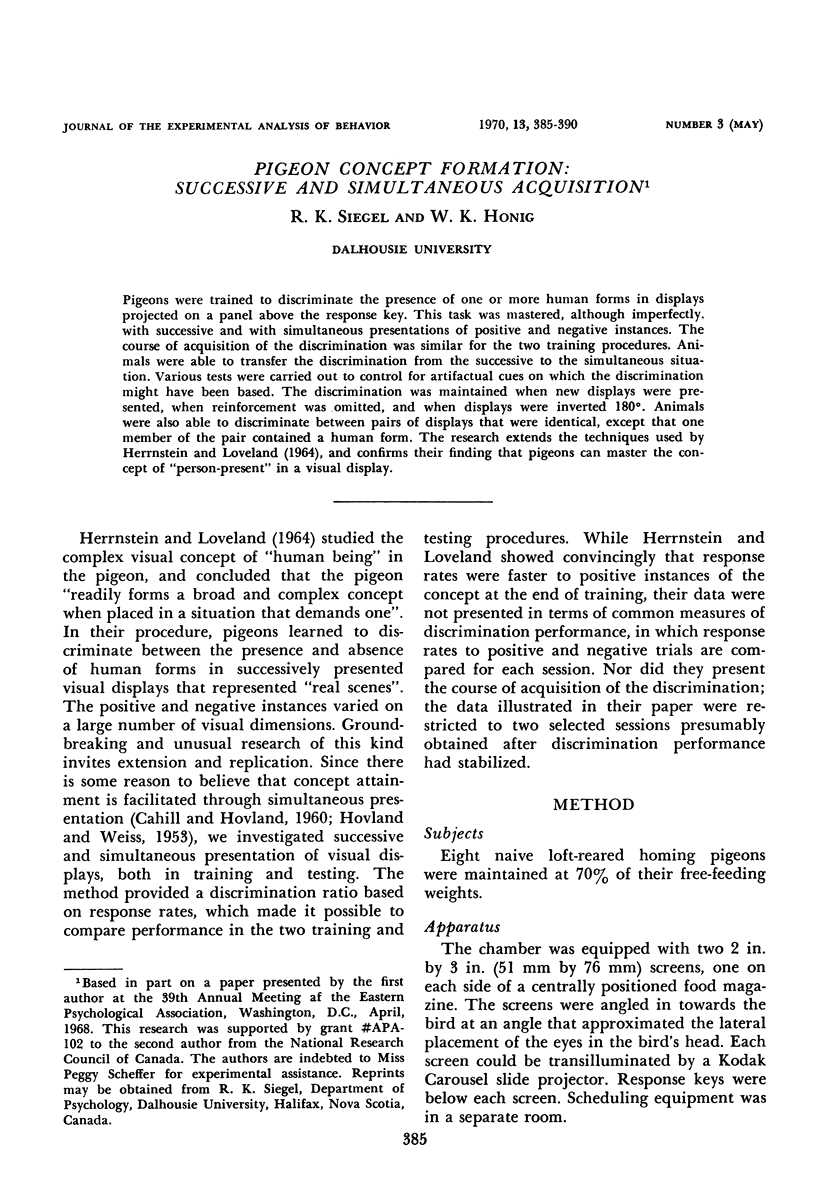
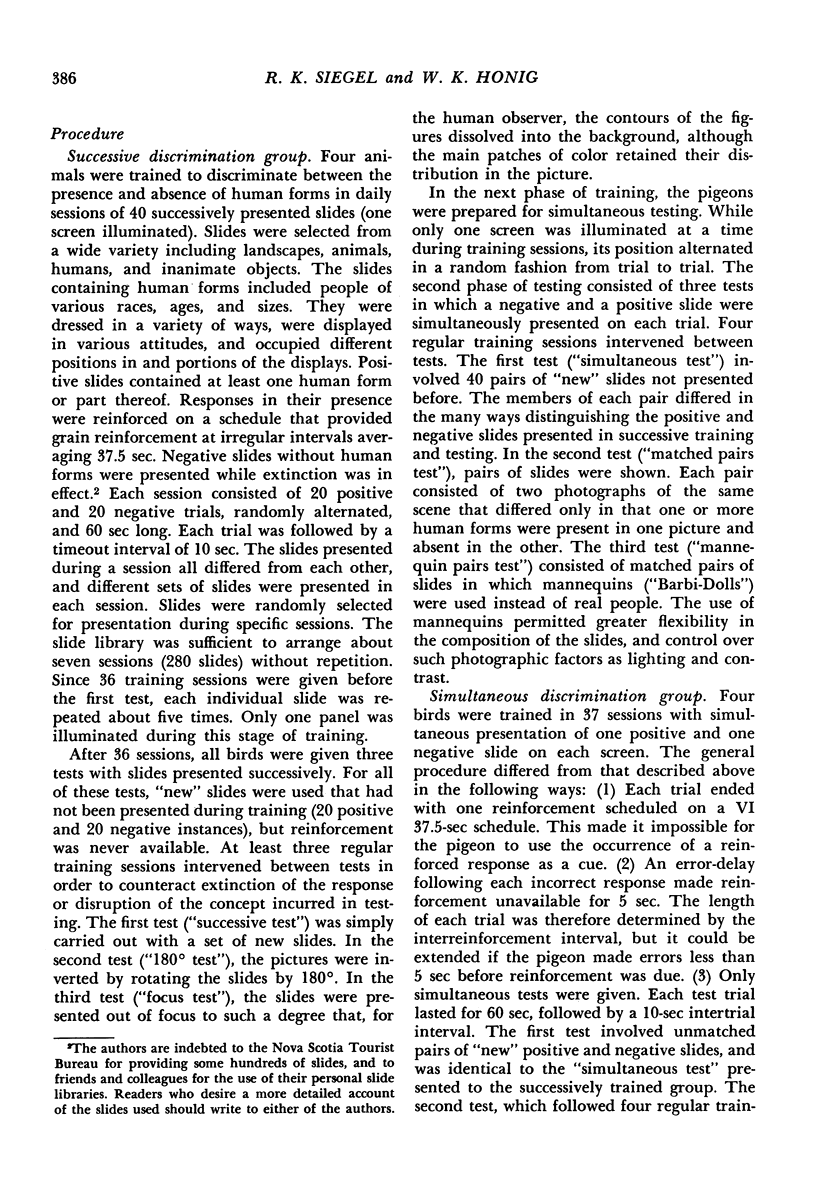
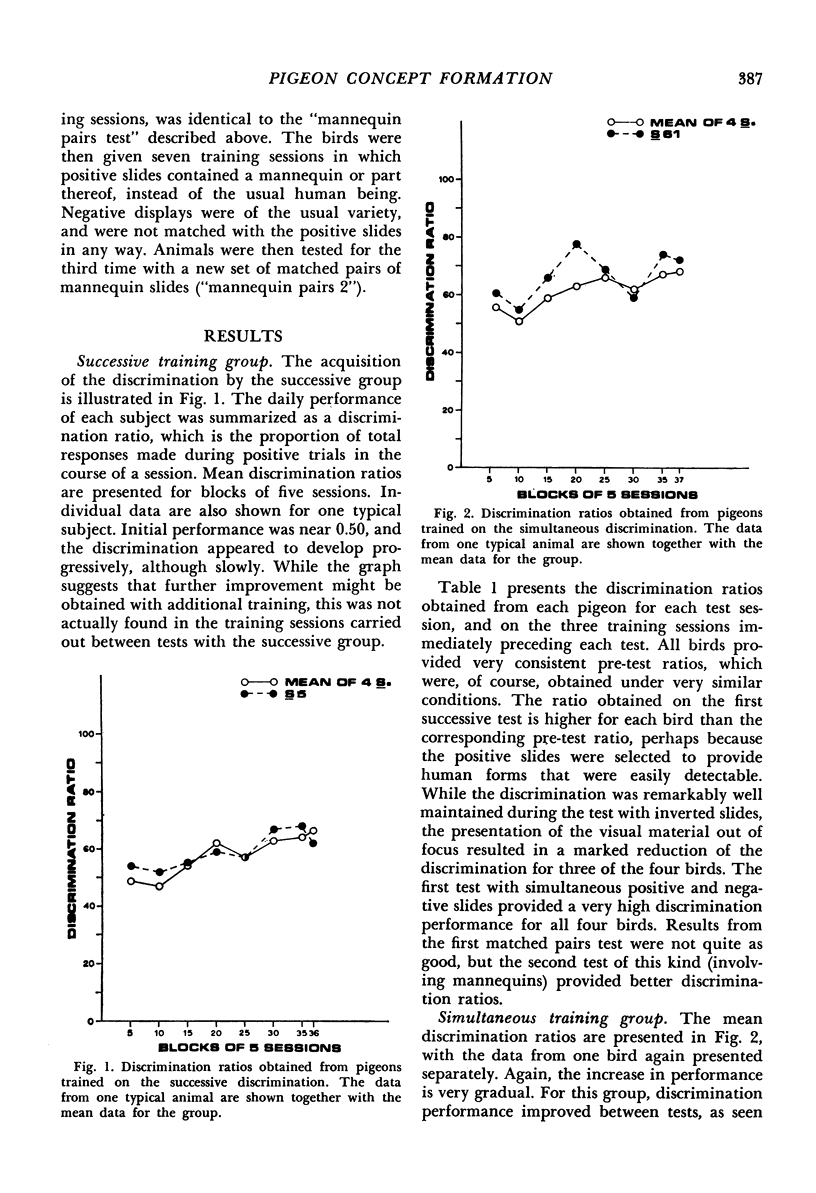
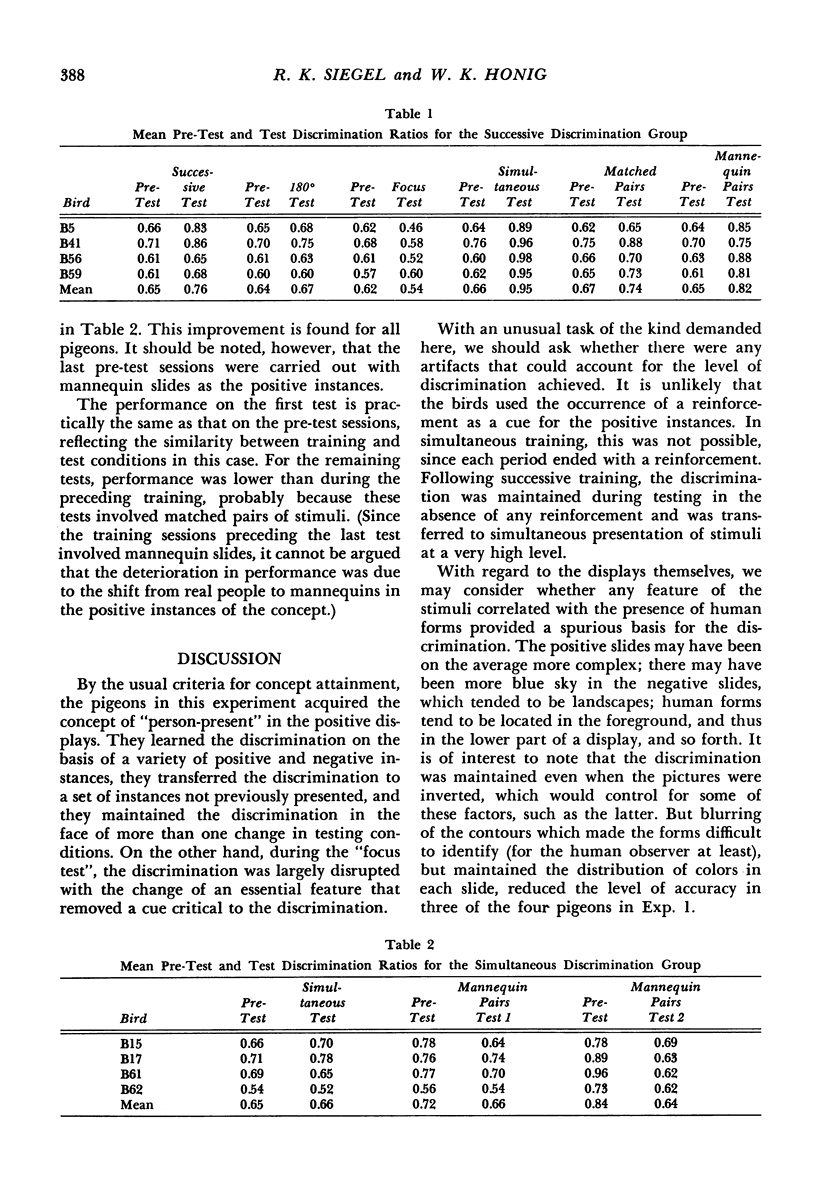
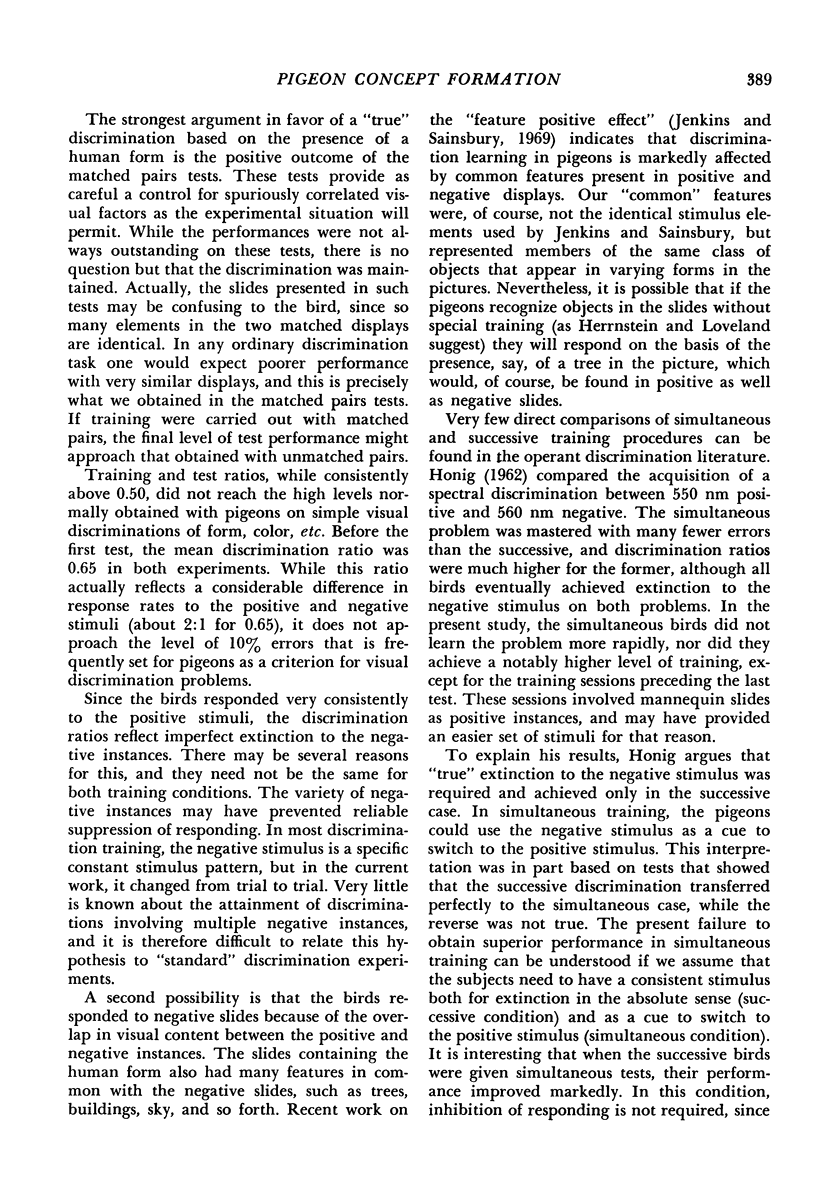
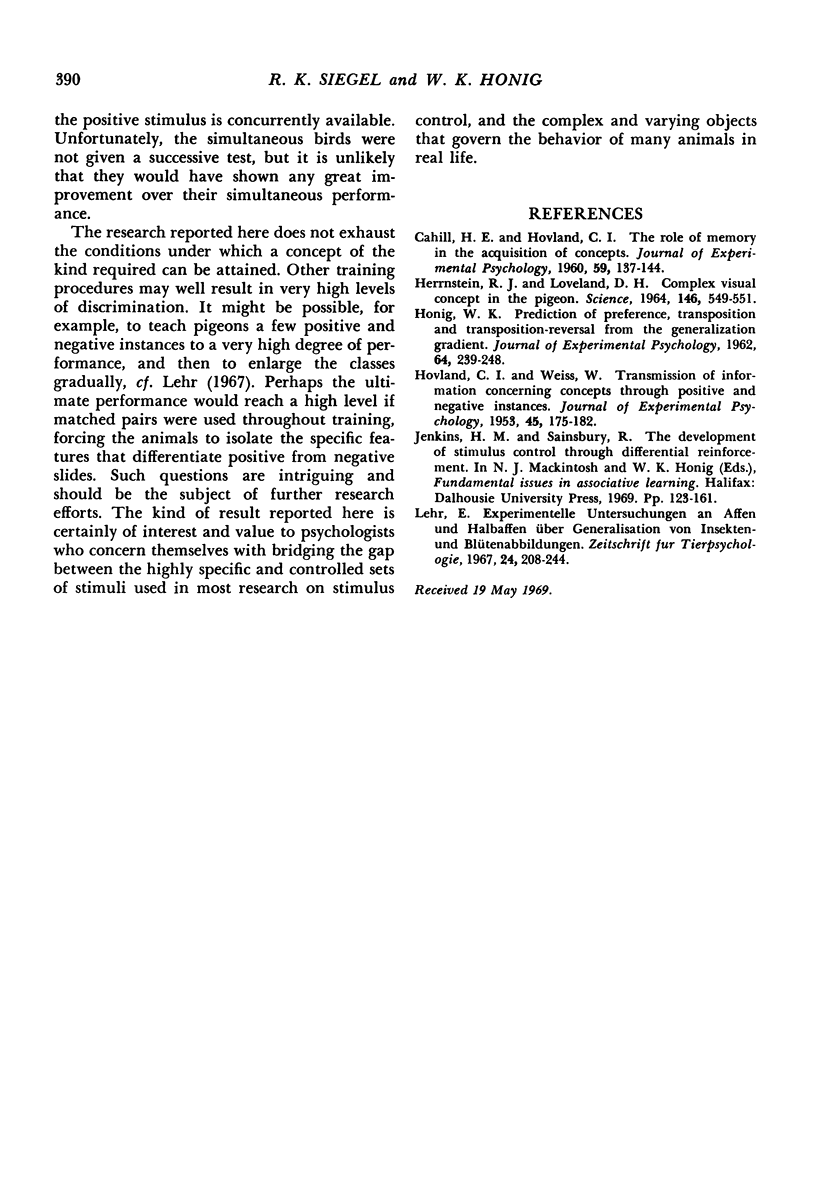
Selected References
These references are in PubMed. This may not be the complete list of references from this article.
- CAHILL H. E., HOVLAND C. I. The role of memory in the acquisition of concepts. J Exp Psychol. 1960 Mar;59:137–144. doi: 10.1037/h0041662. [DOI] [PubMed] [Google Scholar]
- HERRNSTEIN R. J., LOVELAND D. H. COMPLEX VISUAL CONCEPT IN THE PIGEON. Science. 1964 Oct 23;146(3643):549–551. doi: 10.1126/science.146.3643.549. [DOI] [PubMed] [Google Scholar]
- HONIG W. K. Prediction of preference, transposition, and transposition-reversal from the generalization gradient. J Exp Psychol. 1962 Sep;64:239–248. doi: 10.1037/h0048290. [DOI] [PubMed] [Google Scholar]
- HOVLAND C. I., WEISS W. Transmission of information concerning concepts through positive and negative instances. J Exp Psychol. 1953 Mar;45(3):175–182. doi: 10.1037/h0062351. [DOI] [PubMed] [Google Scholar]
- Lehr E. Experimentelle Untersuchungen an Affen und Halbaffen über Generalisation von Insekten- und Blütenabbidlungen. Z Tierpsychol. 1967 Jul;24(2):208–244. [PubMed] [Google Scholar]


